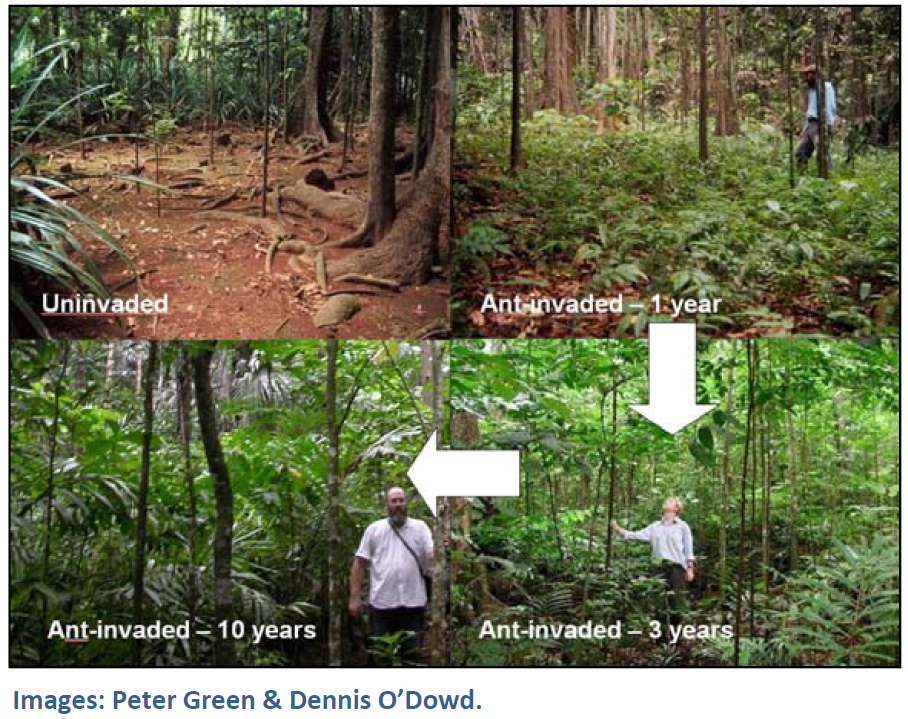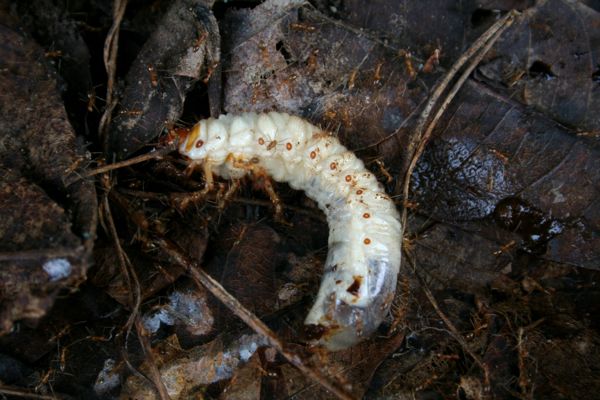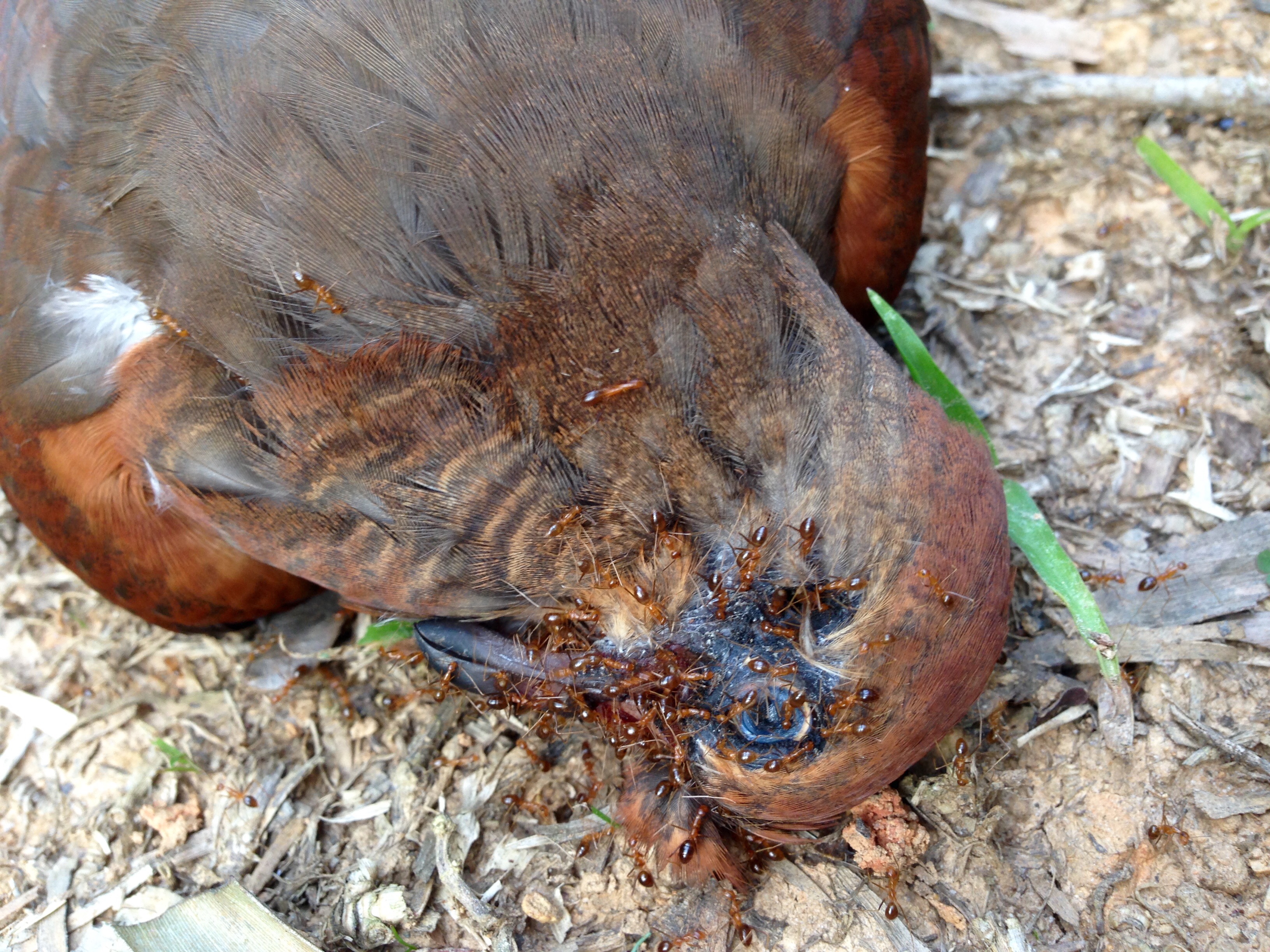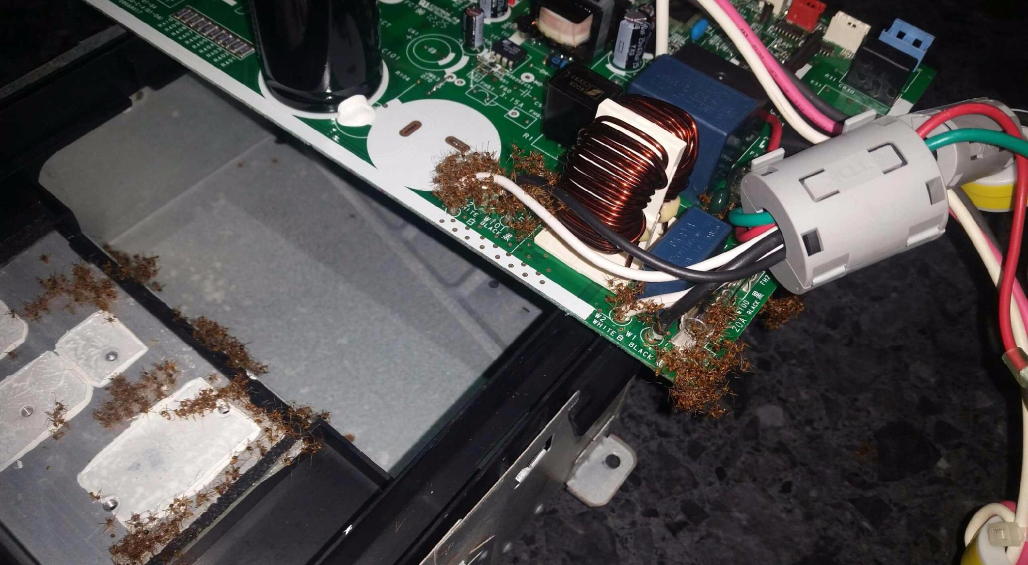
- Wet Tropics Management
- Legislative framework
- Management partnerships
- Sustainable Tourism Plan
- Threats to the Area
- Research and a Learning Landscape
- How can I help?
The yellow crazy ant is listed as one of the top 100 worst invasive species by the IUCN and the Global Invasive Species Database. It has caused substantial environmental harm on numerous islands in Polynesia, Melanesia and Micronesia, including Papua New Guinea. The yellow crazy ant has been reported as a pest in Australia, East Africa, Papua New Guinea, Indonesia, Malaysia (Borneo), Japan, Réunion, Mauritius, Rodrigues, Agalega and India and its impact in the Seychelles is well documented.
The primary threat posed by yellow crazy ants (YCA) emanates from their ability to build high population numbers and expand their range and foraging capacity. The yellow crazy ant’s generalist feeding habits affect all levels of the food chain. Their negative impact on numerous invertebrates and vertebrates have been well documented in disturbed forests in the Seychelles and Hawaii, riparian corridors in east Arnhem Land, plantations in East Africa, Papua New Guinea and the Solomon Islands, and agricultural fields and villages in southern India.

Impacts on our wildlife and unique tropical ecosystems may be direct through predation, harassment or inconvenience to people’s lifestyles and livelihoods or indirect through the removal of lower food-chain organisms or disruption of critical processes such as pollination, seed dispersal and decomposition.
These impacts are best described on the Australian territory of Christmas Island (Indian Ocean) where yellow crazy ants have directly reduced the island’s endemic red crab (Gecarcoidea natalis) population by nearly a quarter. In this example, removal of a keystone species (the red crab) has indirectly caused extreme changes to the island’s floristic community. When red crab populations are unaffected by YCA, they support a healthy forest by cleaning the forest floor of leaf litter, suppress seedling growth and till the soil. In areas of Christmas Island where supercolonies of YCA are present, there are large amounts of leaf litter and seedlings, which will likely lead to long term alteration of the forest ecosystem.

Christmas Island vegetation communities in areas uninvaded and invaded by YCA. Images by Peter Green & Dennis O’Dowd.
Director of Terrain NRM and Adjunct Professor of Environmental Geography at CQU Cairns, Steve Turton remarks that if the impacts on these islands are any indicator of what to expect here in the World Heritage Area, a yellow crazy ant invasion is an impeding natural catastrophe.
There are at least 4000 invertebrate species inhabiting the Wet Tropics World Heritage Area. Many reside in sensitive habitats and will not have effective defence mechanisms to combat the ants if they intrude.
Displacement of these invertebrates by yellow crazy ants is likely to have the same effect as having the rug pulled out from beneath a perfectly balanced and intricate framework. In a system that is as complex and interconnected at the Wet Tropics, the potential for such cascading or ricochet effects, as seen on Christmas Island, is very high.

Yellow crazy ants are especially devastating to native wildlife, due to their tendency to form supercolonies (up to 7.5 billion ants per super colony). When yellow crazy ants are in high abundance they reduce overall species diversity and abundance by displacing native ant species, preying on arthropods unable to defend themselves and attacking ground and arboreal vertebrates such as amphibians and birds. Yellow crazy ants are fomicine ants, which means that they don’t sting, but instead spray formic acid from a small pore at the tip of their abdomen (known as an acidopore) as a defence and attack mechanism. Animals that are sprayed with formic acid may be killed outright or may die later as a result of blinding, injury or reduced movement.

YCA attacking soil invertebrates

YCA feasting on nesting bird

YCA formic acid blister between paws
Extinction is a very real concern for some of the highly sensitive and specialist species of the Wet Tropics Rainforest.
The endangered Kuranda tree frog (Litoria myola) for instance has a tiny distribution, of which YCA have invaded one of the few critical breeding creeks. Nesting birds and their immobile chicks are easy targets for the ants, as are lizard hatchlings and geckos tucked beneath lifted bark. Small mammals that already have a reduced home range due to other threats will be put at greater risk through competitive pressure from yellow crazy ants for food and habitat resources. Due to these attributes, yellow crazy ants can become the dominant invertebrate species in large areas on the ground and in the forest canopy.
-wtma-2.jpg)
Yellow crazy ants can negatively impact both native and cultivated plant species, including cacao, coconut and sugar cane plantations. With an endless thirst for sugar and very poor pollination ability, nectar-producing plants such as wattle and cacao are subject to nectar robbery from thieving yellow crazy ants.
JCU lecturer and leading ecologist Lori Lach calculated that yellow crazy ants can consume 37% of their body weight in nectar in a single serve. Further to nectar-theft, yellow crazy ants have a mutualistic relationship with honeydew-producing aphids and scale insects, whereby yellow crazy ants farm the insects to harvest the honeydew, while simultaneously protecting the pests from natural predatory beetles and wasps. 
As a result of yellow crazy ant farming, scale insect abundance and the associated secretion of honeydew is greatly increased, causing stress to the plant. Residual honeydew eventually builds up on the leaves, creating a layer of sooty mould that then restricts photosynthesis, resulting in poor quality crops and a loss of yield and revenue to the farmers.
Yellow crazy ants can also affect the quality of life of residents living with the ants in and around their homes. The ants will spray formic acid at any potential threat, including household pets, which can damage the soft tissues of cat and dog paws, causing them pain and distress. There are instances of yellow crazy ants invading indoors of resident’s homes and nesting in their electrical appliances, burning them out. A Mount Peter resident suffered temporary blindness after the ants sprayed formic acid into his face whilst sleeping.

Yellow crazy ants have the potential to threaten the tourism industry and visitor enjoyment of the Wet Tropics, the quality of life for local residents and agricultural productivity. The Wet Tropics World Heritage Area sits on a pedestal of global conservation significance, ranking as the second most irreplaceable natural world heritage area. The outstanding universal value of the Area is worth upwards of $2 billion per year and is a beauty worth protecting for now and into the future.